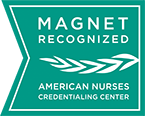Rapid diagnosis of sepsis in acutely ill children – the RAPIDS study
Quick facts
Sepsis remains a leading cause of childhood mortality, causing >$50M in direct costs every year in Australia and New Zealand. A recent WHO resolution endorsed by Australia recognised the urgent need for better recognition, diagnosis, and management of children with sepsis, which is challenging because children initially often have symptoms akin to viral illness.
Every hour delay in the administration of antibiotics leads a rise in mortality in children with infection. Therefore, the most promising approach to improve sepsis outcomes should focus on rapid diagnosis of infection. Using conventional culture methodology, characterisation of bacterial infection and antibiotic susceptibility commonly takes up to 48 hours, and has low diagnostic yield. Recent research has shown that compared to conventional testing, gene-expression assays provide faster and more accurate diagnosis of infection. However, these promising pilot studies do not represent real-world conditions, and the needs of regional and remote populations have not been addressed.
We hereby propose a prospective study in acutely ill children presenting with suspected sepsis to Emergency Departments and Paediatric Intensive Care Units (PICU), including metropolitan, regional and remote centres in Queensland, to test feasibility, performance, time to diagnosis, and cost impact of applying the gene-expression based sepsis diagnostic tools. This could lead to better treatment of infections, reduce unnecessary antibiotic use, shorten hospital length of stay, improve patient outcomes, and allow patients and families to be managed closer to home, with the aim to provide the same care for all children around the state.






